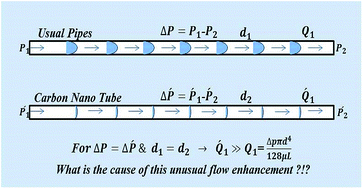Computational fluid dynamics modeling of fluid flow and heat transfer in the central pore of carbon nanopipes
Abstract
Carbon nanopipes, which can be employed in micro- and nano-fluidic devices, have some extraordinary mechanical, optical, flow and electrical properties. In addition, these devices can manipulate very small amounts of liquid. One of the main aspects of these pipes is an unusual enhancement in the flow rate, and it should be explored whether this enhancement can be justified by continuum fluid mechanics or not. Computational fluid dynamics were employed for exploring this phenomenon. To explore this unusual flow enhancement, different parameters, such as temperature, inlet pressure, tube diameter, tube length and slip length were used. With varying parameters, the slip length can explain this phenomenon. The heat transfer was also numerically investigated and an improvement in the heat transfer coefficient and the convective heat flux magnitude were observed for the carbon nanopipes. Then, based on the numerical investigation, correlations were developed for the friction factor and the Nusselt number, and these correlations were verified by the reported experimental data for nanopipes. Moreover, the effects of this slip length on the velocity profile was investigated and the observed shape of the velocity profile was also completely changed from convex to plug-like by importing the effect of slip length on the walls of the tubes.


 Please wait while we load your content...
Please wait while we load your content...